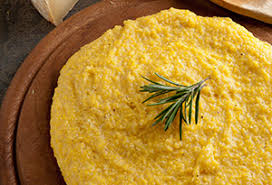Polenta is a staple of northern Italian cuisine that dates back centuries. Over the years, the dish has transformed. People in the Middle Ages cooked polenta using raw ingredients. The polenta was made with the cream of cut broad beans cooked in oil, onion, and buckwheat or spelled. In the 18th century, cornflour replaced the chopped broad beans. Polenta can take on many roles during the meal. This dish can either be a replacement for bread, a side meal, or complement vegetables, fish, meat, or cheese as part of the main dish. While polenta sounds intimidating to make, but this is far from true. Be sure to avoid these mistakes when preparing polenta.
Have Patience
To cook a delicious polenta, it is necessary to be patient and be comfortable waiting. To begin, pour the flour into the stove pot mixture containing water and salt. Continue to stir slowly until the mixture thickens and creates a uniform and smooth consistency. This process will take about 45 minutes to an hour. The final result will be smooth and creamy.
Experiment with Different Flours
For nearly 400 years, Italians made their polenta using coarse-grained corn flour. Wholemeal flours work well as a substitute. One option is buckwheat flour, and this flour has a coarse texture. Try using polenta taragna, which is made from various flours, such as buckwheat and corn. Another popular option is using white corn flour.
Be Picky with Your Pan
Traditionalist prepares polenta in a paila, a copper pot featuring tall edges and a convex-style bottom that allows heat to spread evenly. If you do not own a paila, try using a cast iron or copper pots. However, if these pots are not available, try using a saucepan—the heavier and more significant the saucepan, the better.
Be Careful with Flour and Water
When making polenta, using four quarts of water for every three pounds of flour, coarser flour will absorb more water. When using coarse flour with buckwheat, add liquid slowly.
Go Easy on the Salt
There is no standard amount of salt required for cooking polenta, but adding too much salt can ruin the dish. It is better to go easy and add light salt at the end if necessary. Polenta often compliments main dishes, so the dish should have a light amount of salt.
Follow us for more delicious recipes.


